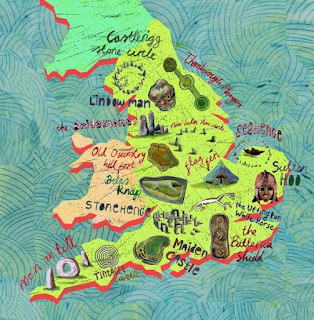To have a go, you will need a pen and paper with the letters A to H written down. You choose the name that you like the best and tally a point next to the correct letter.
*This is not a scientifically created quiz so your score may not actually reflect your style but it is a bit of fun.
First Round
Alba vs Alice
Beatrix vs Beatrice
Camilla vs Christina
Augusta vs Eleanor
Felicia vs Felice
Helena vs Helen
Juliana vs Joan
Lucia vs Lucy
Marina vs Marion
Octavia vs Osanna
Paulina vs Petronilla
Victoria vs Rose
Serena vs Sybil
Tally how many right names by letter B and how many left names by letter A.
Second Round
Ann vs Alice
Bertha vs Beatrice
Christabel vs Christina
Elizabeth vs Eleanor
Faith vs Felice
Hannah vs Helen
Joanna vs Joan
Leah vs Lucy
Muriel vs Marion
Emma vs Osanna
Phillipa vs Petronilla
Ruth vs Rose
Sarah vs Sybil
Tally how many right names by letter B and how many left names by letter C.
Third Round
Ann vs Amelia
Bertha vs Barbara
Christabel vs Charlotte
Elizabeth vs Eliza
Faith vs Frances
Hannah vs Hester
Joanna vs Julia
Leah vs Lydia
Muriel vs Maria
Emma vs Olivia
Phillipa vs Phoebe
Ruth vs Rebecca
Sarah vs Sophia
Tally how many right names by letter D and how many left names by letter C.
Fourth Round
Ada vs Amelia
Blanche vs Barbara
Clara vs Charlotte
Elsie vs Eliza
Florence vs Frances
Harriet vs Hester
Josephine vs Julia
Louisa vs Lydia
Martha vs Maria
Olive vs Olivia
Phyllis vs Phoebe
Rosa vs Rebecca
Susannah vs Sophia
Tally how many right names by letter D and how many left names by letter E.
Fifth Round
Ada vs Agnes
Blanche vs Bessie
Clara vs Catherine
Elsie vs Edith
Florence vs Freda
Harriet vs Hilda
Josephine vs Joyce
Louisa vs Lily
Martha vs Marie
Olive vs Ida
Phyllis vs Vera
Rosa vs Ruby
Susannah vs Sheila
Tally how many right names by letter F and how many left names by letter E.
Sixth Round
Audrey vs Agnes
Betty vs Bessie
Cynthia vs Catherine
Elaine vs Edith
Fiona vs Freda
Heather vs Hilda
Jacqueline vs Joyce
Linda vs Lily
Maxine vs Marie
Alison vs Ida
Patricia vs Vera
Rosemary vs Ruby
Sally vs Sheila
Tally how many right names by letter F and how many left names by letter G.
Seventh Round
Audrey vs Ava
Betty vs Bethany
Cynthia vs Chloe
Elaine vs Ella
Fiona vs Freya
Heather vs Harper
Jacqueline vs Jasmine
Linda vs Lola
Maxine vs Mia
Alison vs Isla
Patricia vs Willow
Rosemary vs Robyn
Sally vs Sophie
Tally how many right names by letter H and how many left names by letter G.
Eighth Round
Alba vs Ava
Beatrix vs Bethany
Camilla vs Chloe
Augusta vs Ella
Felicia vs Freya
Helena vs Harper
Juliana vs Jasmine
Lucia vs Lola
Marina vs Mia
Octavia vs Isla
Paulina vs Willow
Victoria vs Robyn
Serena vs Sophie
Tally how many right names by letter H and how many left names by letter A.
RESULTS (look at the letter with the most tallies on your paper):
A Roman
B Medieval
C Tudor and Stuart
D Georgian
E Victorian
F Edwardian and WW1
G Post War Years (40s to 70s)
H Modern
My results showed that my top era was Roman. Other high scorers were Georgian and Victorian. My lowest score was Medieval. What was your score?













